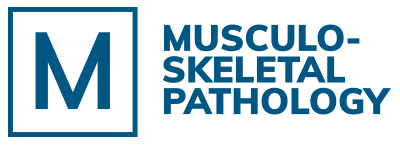New treatment for abnormal bone growth:patent no. EP19382094
The abnormal growth of bone outside its usual place greatly affects the quality of life of patients: compression of nerves and blood vessels (with great associated pain), reduced mobility… These ossifications may produce bone protrusions such as osteophytes and syndesmophytes or heterotopic ossifications… The latter, in turn, can be of genetic origin (progressive bone fibrodysplasia or PFO, heterodysplasia ossificans progressive or HOP) or acquired (bone growth after joint replacement, head trauma with long bone breakage, major burns, electrocutions …). These bone growths are commonly removed by surgery. This process greatly increases the risk of relapses, thus generating a derived problem. Relapses are commonly treated with radiation therapy, highly aggressive, with numerous adverse effects and not suitable for the pediatric population.
To understand abnormal bone growth, it is necessary to know that mesenchymal stem cells give rise to several cell types, including osteoblasts (cells responsible for bone formation) and adipocytes (adipose tissue cells), but also fibroblasts and chondrocytes (cartilage cells) Depending on the anatomical location, the cellular microenvironment, and the type of tissue in which these stem cells are found, a specific cell fate will be favored over the rest. The interrelationship between these fates is not always symmetric. Specifically, the antithetical relationship that exists between cell differentiation to osteoblasts and adipocytes stands out. The balance between these two cell fates is essential to understand bone physiological and pathological processes. Specifically, this balance is broken in heterotopic ossifications and leans towards the osteoblastic differentiation side and, therefore, bone formation.
There are various stimuli (chemical, physical, biological) that modulate the osteoblast-adipocyte balance, favoring one over the other cell fates. For instance, obesity favors fat formation, thus inhibiting bone formation which is the opposite of what mechanical load or physical exercise favors. In other cases, it is the magnitude of the stimulus that determines the cell fate. This is the case of inflammation, where a low degree favors the consolidation of bone fractures, but an intense stimulus acts as a bone catabolic agent. All things considered, it is estimated that those stimuli that promote bone formation inhibit the formation of adipose tissue and vice versa.
In this regard, our therapy seeks a synergistic effect by modulating the balance at two points: on one side the therapy inhibits the stem cells fate into osteoblasts to prevent bone formation, and on the other side the therapy directs cell fate towards adipocytes, and thus, counteracting the pro-osteoblastic pathological stimuli and preventing a recurrence in bone formation.

Osteoblast and adipocyte differentiation pattern alteration.
Description of therapy
The therapy consists of three repositioned drugs that exert a synergistic effect on the differentiation of mesenchymal stem cells:
- Oral antidiabetics that promote adipogenesis at the intracellular level and inhibit the main bone anabolic pathway, the WNT pathway.
- And the specific combination of two anti-inflammatory drugs, one steroidal and the other non-steroidal with intracellular actions that magnify and sustain the proadipogenic activity of oral antidiabetic drugs.
Pharmaceutical formats and applicability
Different pharmaceutical forms and their applicability:
- Oral: in our patent, we propose the oral use of our tri-therapy as a treatment for planned surgeries to remove bone masses.
- Injectable: considering that an oral presentation is not always adequate to the patient’s condition, we propose an injectable presentation for local use. This pharmaceutical form would make it possible to maximize the activity of the therapy, reducing its potential adverse effects in specific patients.
Current status of the patent
The patent license application period is currently open for those interested in its commercial exploitation. The ownership of this patent belongs to the Servizo Galego de Saúde (SERGAS).
Contact
Mabel Sampedro Parada
mabel.sampedro.parada@sergas.es
+34 981 951 195 (ext. 251 195)
